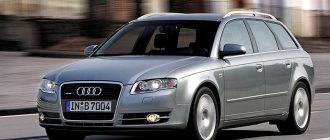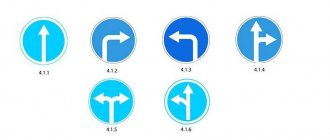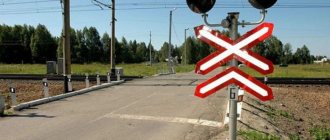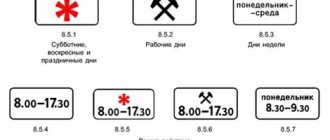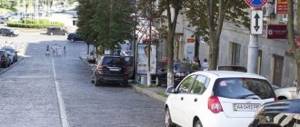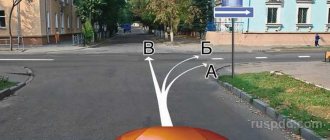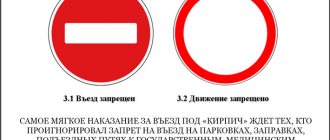Modern cars are equipped with a lot of electronics. To enable timely monitoring and diagnostics, each device is connected to a panel with signal indicators. Each icon has a unique meaning, ensuring there is no confusion while driving. The designation of the icons on the instrument panel is different for each car, which is explained by the difference in the designs of the on-board systems.
The difficulty is that there can be a large number of icons on a modern machine. The following is a description of each symbol separately.
Designations
Modern cars are equipped with a lot of electronics.
To enable timely monitoring and diagnostics, each device is connected to a panel with signal indicators. Each icon has a unique meaning, ensuring there is no confusion while driving. The designation of the icons on the instrument panel is different for each car, which is explained by the difference in the designs of the on-board systems. The difficulty is that there can be a large number of icons on a modern machine. The following is a description of each symbol separately.
What icons are there and what do they mean?
Some motorists have always been embarrassed to ask what the car signs that light up on the board mean. Initially, you need to figure out what groups pointers and symbols are divided into.
- Informational – notifies the car owner about the activation of external devices. They are usually green or blue in color.
- Warning - indicate that failures or breakdowns have been detected in the system that require verification. The main color is orange or yellow.
- Emergency. If the red indicator lights up, this indicates that there are critical errors in the device and immediate repair is required.
The groups are further divided into subcategories indicating part of the on-board network. The icons have clarifications in the form of pictures corresponding to the part. There are also letter indices here - the encryption is the same for all cars and is responsible for one circuit.
Note! In 90% of modern cars, when the ignition is turned on, all the indicators on the dashboard light up and go out after 10 seconds. You need to pay attention only to those lamps that are constantly on.
Icon catalog
The complete list of existing icons is most conveniently expressed in a table.
| Appearance | Decoding |
| The presence of such a thermometer indicates that an insufficient or excessive temperature of the coolant in the head radiator has been detected. If the icons are blinking, the lines may be damaged or a fluid leak has been detected. | |
| A red watering can indicates a critical drop in pressure inside the engine lubrication system. | |
| The voltage in the vehicle's on-board network has dropped significantly. The battery needs to be charged or replaced. Indirectly indicates a malfunction of the generator or its wiring. | |
| If the red triangle lights up, this indicates that the car is trying to attract the driver’s attention. Usually illuminated in conjunction with other indicators. | |
| Failure of the electronic stabilization unit of the machine. It may also light up when the system is not working properly. | |
| If the car with a key is on, it can also be installed in the form of a green key - the sign indicates that the immobilizer is activated. | |
| A lock in the background of the car - a critical failure or an error has been detected - the breakdown of the standard anti-theft system. | |
| Installed only on automatic transmission. A red gear sign indicates overheating or a unit error. Additionally, it may be accompanied by a sound signal. | |
| The wrench indicator always indicates individual types of breakdowns. The exact value must be found in the vehicle's service manual. | |
| In 90% of cases it is installed exclusively on modern high-power racing cars. Indicates overheating of the chassis devices. Indirectly indicates the likelihood of loss of control. | |
| An indicator with a picture of a steering wheel indicates that there may be a leak in the power steering housing or a failure of the electric power steering. | |
| The handbrake lever is raised. If the icon is on, you need to remove the car from the handbrake to start driving. | |
| Critical drop in brake fluid level. To continue driving, you need to perform a full diagnostic of the device and add fluid to the tank. | |
| A car with skid marks (the indicator looks like a “slippery road” road sign) indicates that the anti-lock brake system is engaged or faulty. | |
| Critical wear of brake pads. When the symbol lights up, you need to quickly go to a service station for service. | |
| May also be accompanied by the inscription break. Indicates a malfunction or disconnection of the anti-lock brake system. | |
| The brake force distribution device is broken, if the option is present on the vehicle. | |
| Lightning indicated in yellow. Mounted only on modern foreign cars - this indicates a failure or damage to the electronic parking brake control system. | |
| Mounted exclusively on cars with automatic transmission. Indicates the need to hold the brakes to unlock the automatic transmission speed selector | |
| The output from the wheel pressure sensors indicates a drop in pressure inside the tires by more than 25% of the nominal value. | |
| Limitation of power supply to the engine. A yellow indicator indicates the need for an urgent engine check. | |
| The red oil can icon indicates a drop in the oil level in the crankcase. | |
| Airbag failure. If the indicator blinks, this indicates a violation in the blocks responsible for the correct operation of the unit. | |
| The front passenger airbag is deactivated. | |
| If it lights up only when the ignition is turned on, there is nothing terrible. If a fire occurs while driving, it indicates overheating of the automatic transmission components. | |
| The presence of checks on the tidy indicates the need to check the engine - there may be a violation of the internal components of the internal combustion engine. | |
| Engine power has decreased critically. You can remove it by restarting the engine after 10 seconds of inactivity. In turbocharged internal combustion engines, it may indirectly indicate turbine failure. | |
| Malfunctions of the on-board network or electronic systems. | |
| Lambda probe - malfunction or severe blockage. It is necessary to clean or replace the part with a new one. | |
| Indicates a breakdown or overheating of the catalyst. | |
| It is necessary to check that the gas tank is closed correctly. The funnel is located on the side where the fuel tank is located. | |
| An information pointer appears on the board simultaneously with display signals. The purpose of the sign is to inform the driver that there are problems. | |
| A serious error has appeared on the display. The icon shown in the photo indicates the need to read the user manual to resolve the problem. | |
| A leak has been detected in the engine cooling system. Indirectly indicates an increase in engine temperature. Lights up simultaneously with checks or other indicators. Depending on the type of car, the indicators differ, but the meaning is the same. | |
| Damage or incorrect operation of the electronic throttle units. | |
| The icon has a characteristic meaning. The lamp indicates a malfunction or disconnection of the remote tracking system. | |
| In some cars, it indicates the need to evacuate the car - a critical breakdown has been detected. The second meaning is that it is necessary to carry out scheduled maintenance. | |
| Reminder to the driver about the need to change the oil and perform maintenance. | |
| The air filter on the intake system is broken or the element is clogged - replacement is required. | |
| It has three meanings depending on the design of the car. May indicate malfunctions of the traction control system, stabilizers, and electronic differential locks. | |
| 4x4 system activated. The second meaning is that diagnostics of the chassis is required. | |
| The emergency brake assist device is disabled or damaged. | |
| The on-board computer detected that the car was slipping and activated the directional stability modules. In other versions, there may additionally be a drawn snowflake here. | |
| The image of the key and skid marks means that the above system is disabled or disabled. In this case, the car drives normally without the involvement of electronic components. | |
| The four pointers have different purposes. The first and third indicate the absence of an electronic key inside the car. The second and fourth for his presence. | |
| The battery of the electronic keys is worn out; you need to replace the battery immediately. | |
| The option of assistance when starting on snow is included. Additionally, it makes it possible to dose the amount of fuel. | |
| Found on trucks such as Photon Ollin and more “advanced”. The driver is asked to take a break or rest. In Europe, there is a fine for neglecting the indicator. | |
| It acts as part of cruise control and indicates a dangerous approach to a leading vehicle. | |
| Used for trucks, indicates the inclusion of the trailer mode. | |
| Autopilot on the car is turned on. When flashing, the car moves out of the lane; if the lamp is constantly on, a system failure of the program or mechanical damage has been detected. | |
| Stop/start mode failure. Electronic units do not work correctly. | |
| On all-wheel drive models, it indicates that the rear axle is engaged exclusively. | |
| Same with automatic 4x4 connection in a car. | |
| The center differential is locked. | |
| Likewise for the rear axle. | |
| 4x4 is activated, all wheels are in forced rotation mode. | |
| Breakage of the all-wheel drive clutch or breakdown, failure in the internal components of the chassis. | |
| Attention! The car is on the handbrake or a breakdown has been detected, depending on the design of the car. | |
| On electric models, it indicates that a problem has been detected in the high-voltage network. | |
| Malfunction of electronic on-board systems. | |
| The high-voltage battery is discharged and requires charging. | |
| Can be used for electric forklift or modern cars. The device requires recharging. | |
| Indicator of critical reduction in engine power. Possible turbocharger failure. | |
| Malfunction of the horn or similar sound warning devices. | |
| A yellow spiral indicates that the glow plugs are in warm-up mode (for diesel engines only). | |
| If the diesel particulate filter is OK, the indicators should not light up. The presence of icons indicates a blockage or breakdown of the system. | |
| Dry catalyst - too little water for a successful cleaning reaction. | |
| The exhaust cleaning system is faulty and requires repair. | |
| Three indicators with the same meaning. They can be made in the form of a gas station with drops or in the form of a float chamber. They indicate the need to flush the fuel system or the presence of water in it. Additionally, it can signal the need to replace filters. | |
| There is a minimum amount of fuel left in the fuel tank. You need to stop at a gas station. A similar icon is present on the 2109 dashboard produced by VAZ. |
Fine for not having a Novice Driver sign in 2021
According to statistics, 50% of road accidents are caused by novice drivers. They still drive uncertainly, maneuver poorly and react slowly in difficult situations. Beginners are considered to be those motorists with less than two years of driving experience.
The sign is needed so that other road users see the newcomer, do not create obstacles or stressful situations for him, and also be more careful when maneuvering next to him. The exclamation mark serves as a warning - unpredictable actions, sudden braking, incorrect lane changes, and illogical parking can be expected from a novice driver.
Many new drivers refuse to put an exclamation point in a triangle on their car. There are reasons for this - some experienced drivers begin to test the strength of dummies: they overtake, cut off, press closely from behind. With such actions they try to scare a person and put him into a stupor. You should not pay attention to such “drivers”: a normal person will not assert himself at the expense of a newcomer.
The requirement to attach the “Inexperienced Driver” sign is not the only one for motorists with little driving experience. According to the Decree of the Government of the Russian Federation dated March 24, 2017, drivers with less than two years of experience are prohibited from towing vehicles, and inexperienced motorcycle drivers are prohibited from carrying passengers.
Simply put, a driver with little experience is prohibited from taking responsibility for the life and health of other people. Otherwise, including speed, there are no restrictions.
From 04/04/2017, the “Beginner Driver” sign is required if you have less than two years of driving experience. A beginner must have this sign on his car to undergo technical inspection and register the vehicle with the traffic police.
Experience is accrued from the moment a person receives a driver's license. Even if the driver does not buy a car or does not drive at all, two years after receiving his license he will not be considered a beginner. Of course, such a ruling is not entirely fair. But it is simply impossible to take into account length of service and level of experience in any other way. New drivers must understand that actual driving experience is much more important than what is stated on the license.
Global practice shows that two years is enough for a person to adapt to driving, learn to react quickly in unusual situations and not create obstacles on the road. During this time, the driver will gain experience and become more confident. Well, those who were initially too confident in themselves will moderate their ardor.
The fine for his absence is 500 rubles. If a new motorist is repeatedly caught operating a vehicle without a warning sign, the fine may be increased. In case of violation of traffic rules, you may even face deprivation of your license for three months.
Don't forget to remove the sign after the two years expire, otherwise you may get a fine for this too.
The exact location of the sign is not regulated by traffic regulations. It only says that it must be stuck on the back of the car. Most often, the rear window serves as the platform for the sign. It makes no difference whether a warning is attached to the left or right.
The requirements for attaching the sign are as follows:
- it must be visible to all road users, including pedestrians and cyclists;
- it should not create interference or interfere with the visibility of the driver of the vehicle on which it is attached.
Do not confuse the student driving sign with the novice driver sign. “U” is put on training cars, that is, on those driven by drivers who have not yet received a license. Cars with “U” are always driven accompanied by a driving school instructor. After graduating from a driving school, a person becomes a full-fledged driver, and he is prohibited from putting a student badge on his car. You cannot replace the exclamation mark with the letter “U”.
How long to drive is determined, but why is this sign needed at all? Such questions can often be heard from those who have to put a “!” sign on their car, thereby immediately distinguishing themselves from the general mass of cars. The purpose of the sign is obvious - to warn other drivers that the car is being driven by a novice with insufficient skills and thereby reduce the risk of an accident. After all, you can expect anything from a driver without driving experience: sharp braking, incorrect and unexpected lane changes, illogical actions while parking, etc. And psychologists advise beginners to overcome existing fear, unpleasant feelings of the “teapot” and hang up a sign, because safety is more important. Moreover, an exclamation mark is better than, for example, an image of a teapot or a lady’s shoe, which are sometimes attached to cars.
- Lyudmila (Tula) 08/22/2020, 06:58 #15829 Quote Reply ↓ +5 I’ve been driving with this sign for three years, and I want to tell you, it helps in some way, there really are some drivers who are inadequate, they begin to compete with you on the road (This is generally then the road, and the slightest wrong movement, and you’re all in) Sorry, but you, too, were once a student, and were not born with it!!! In a sense, this sign even saves, I always try to skip, to give in, suddenly the person has no time, and he is in a hurry!!! Be mutually polite, and please keep your distance, and especially the traffic rules!!! Thank you!!!
The title of “driver” is given to a citizen who has diligently attended theoretical and practical classes at a driving school, and also received a positive assessment on the final test.
However, the experience that he gained while driving with instructors is not enough and when he goes out on his own for the first time, many experience great stress. This affects alertness and the ability to make correct decisions in difficult situations.
By law, people who have recently completed training to drive any vehicle are required to have an identification badge. It must be present on the car for the next 2 years.
However, there are exceptions that include:
- tractor drivers;
- motorcyclists;
- drivers of mopeds and self-propelled vehicles.
There is simply no way to attach a sign to these types of vehicles. Moreover, there is no urgent need for this either. Since the tractor, by its design, does not allow for movement at high speed.
In this regard, the danger that the driver will take a rash maneuver is reduced to zero. If there is a moped or motorcycle on the road, drivers automatically become more vigilant.
For a novice driver, the sign will also be useful when passing a technical inspection. The procedure is mandatory, since it is the basis for issuing a diagnostic card and an insurance policy.
If the car meets all the requirements, but there is no identification mark, then there is little chance of receiving a document confirming the successful completion of maintenance:
- This is primarily due to the fact that rules are broken.
- Secondly, there is a high risk that a car driven by an inexperienced person will have an accident.
Having decided on the meaning and size of the required sign, the natural question arises of where exactly it should be placed.
The primary source that provides a comprehensive answer is the traffic rules. They indicate that the location is the rear of the car. However, there are no clear instructions on where exactly to place it.
- Prices
- Characteristics
- Test Drive
- Four-wheel drive
- Trunk
- Photo
- Video review
- News
- Lada Vesta Cross sedan
- Prices
- Characteristics
- Test Drive
- Trunk
- Photo
- Video review
- release date
- News
- Who is a novice driver?
- What does the “Beginner Driver” sign look like?
- What laws prohibit a novice driver
- Is driving without a sign allowed?
- Fine for missing a sign
- What if the car is not yours, but an owner with extensive experience?
- Is it possible to print the sign?
Decoding symbols
Modern cars have a large number of symbols and abbreviations that are responsible for individual networks. The full transcript is more readable in table form.
| Indicator | Decoding |
| The indicator indicates that the unit for automatically activating external illuminators is turned on. | |
| The symbol indicates that the adaptive headlight control system is disabled. If the lamp blinks, an error has been detected in the network. | |
| The autopilot system is activated and road markings are monitored. | |
| Duplicates the above system, indicating that the machine is moving to the side. | |
| Malfunction of the start/stop device - the car may not stall at traffic lights. | |
| All-wheel drive mode is activated in normal mode. | |
| Likewise with downshifting (for SUVs). | |
| LOCK – the center differential is turned on, forced drive to all 4 wheels is activated. | |
| It may also look like a green M. The sign indicates that the fuel economy mode is turned on (one or more cylinders are turned off). | |
| Four-wheel drive malfunction. | |
| Mismatch in diameters of front and rear wheels on all-wheel drive. | |
| Overheating of the center differential. It may also indicate a breakdown or breakage of the drive. | |
| Severe overheating of the oil in the rear axle. You need to stop and wait for the lubricant to cool. | |
| Active Steering is enabled. | |
| Problems in the above module. | |
| Driving mode with increased gear ratio is activated. On an automatic, the car starts moving in 2nd gear. | |
| Malfunction of the continuously variable transmission drive. In normal mode, it lights up briefly when the ignition is turned on. | |
| Damage to variable speed steering. | |
| Indicators for switching driving modes. Typically used in modern cars such as Mercedes W164. When one of the indicators is turned on, the engine and suspension settings may change. | |
| The forced delay mode for gear shifting is enabled on automatic transmissions. Allows you to rev the engine as much as possible and is used when overtaking. | |
| Depending on the design of the machine, it may be round in shape and have an exclamation mark. In some trim levels, the exclamation mark lights up separately. The indicator indicates activation of the handbrake and fluid leakage from the lines. | |
| A lubricant leak has been detected from the engine crankcase. There is an urgent need to stop and make up for the loss. | |
| TPMS alert indicates pressure loss. | |
| The ABS device is not working correctly. You must be careful when driving. Also, the ABS icon may indicate a puncture in one of the vehicle’s wheels. | |
| The ESP device is an electronic stability control system designed to assist the driver. When the indicator turns on, the side needs to be checked. | |
| The indicator is found on modern foreign cars. The block helps keep the car in turns. If the EPC fires, you should drive the vehicle with extreme caution - the device is turned off. Similarly, it can be indicated as EPS, but there is no fundamental difference. | |
| Electronic brake force distribution device. EBD helps the driver maintain direction during emergency braking. If the indicator is on, the unit is faulty. | |
| Depending on the manufacturer, they indicate a breakdown of the traction control system. | |
| The electronic kinetic suspension control module is faulty. | |
| They duplicate the meaning of the above picture with the difference in the principle of breakdown. The icon indicates that the device is turned off. | |
| The automatic braking device when approaching a vehicle in front is disabled or broken. Cleaning the external sensors often helps. | |
| The module of electronic assistants when driving the car is broken. The car is controlled normally, but only with the help of mechanics. | |
| It can also be made in the shape of a snowflake. Indicates that driver assistance modes are activated on slippery roads. | |
| Indicator of the position of the car body above the road surface. The option is mounted exclusively on vehicles with air suspension. | |
| Failures were detected in the running parts of the vehicle. | |
| PS | A square indicator may indicate a power steering malfunction or the need to change the filled fluid. |
| Disabling overdrive on an automatic transmission. | |
| The engine needs to be checked. The EPC system can forcefully reduce the power of the power plant. |
Warning signs
Warning signs inform drivers that they are approaching a dangerous section of the road, driving along which requires taking measures appropriate to the situation.
1.1 "Railway crossing with barrier."
1.2 “Railway crossing without a barrier.”
1.3.1 "Single track railway"
1.3.2 "Multi-track railway"
Designation of a railway crossing not equipped with a barrier: 1.3.1 - with one track, 1.3.2 - with two tracks or more.
1.4.1-1.4.6 “Approaching a railway crossing.”
Additional warning about approaching a railway crossing outside of populated areas
1.5 “Intersection with tram line”
1.6 “Intersection of equivalent roads”
1.7 "Roundabout"
1.8 “Traffic light regulation”
An intersection, pedestrian crossing or section of road where traffic is regulated by a traffic light.
1.9 "Drawbridge".
Drawbridge or ferry crossing.
1.10 “Departure to the embankment.”
Departure to the embankment or shore.
1.11.1, 1.11.2 “Dangerous turn.”
Rounding a road with a small radius or with limited visibility: 1.11.1 - to the right, 1.11.2 to the left.
1.12.1, 1.12.2 “Dangerous turns”.
A section of the road with dangerous turns: 11.12.1 - with the first turn to the right, 1.12.2 - with the first turn to the left.
1.13 “Steep descent.”
1.14 “Steep climb.”
1.15 "Slippery road."
A section of road with increased slipperiness of the roadway.
1.16 "Rough Road"
A section of road that has unevenness on the roadway (undulations, potholes, uneven junctions with bridges, etc.).
1.17 “Artificial hump”.
A section of road with artificial hump(s) to force a reduction in speed.
1.18 "Gravel release".
A section of road where gravel, crushed stone and the like can be thrown out from under the wheels of vehicles.
1.19 "Dangerous roadside."
A section of road where pulling off to the side of the road is dangerous.
1.20.1-1.20.3 “Narrowing of the road.”
Tapering on both sides - 1.20.1, on the right - 1.20.2, on the left - 1.20.3.
1.21 “Two-way traffic”.
The beginning of a section of road (roadway) with oncoming traffic.
1.22 “Pedestrian crossing”.
Pedestrian crossing marked with signs 5.19.1, 5.19.2 and (or) markings 1.14.1 and 1.14.2.
1.23 "Children".
A section of road near a children's institution (school, health camp, etc.), on the roadway of which children may appear.
1.24 “Intersection with a bicycle path or bicycle pedestrian path.”
1.25 “Road works”.
1.26 “Cattle Driving.”
1.27 "Wild Animals".
1.28 “Falling Stones.”
A section of road where avalanches, landslides, and falling rocks are possible.
1.29 "Sidewind".
1.30 "Low-flying planes."
1.31 "Tunnel".
A tunnel in which there is no artificial lighting, or a tunnel in which the visibility of the entrance portal is limited.
1.32 "Congestion".
A section of road where there is a traffic jam.
1.33 "Other hazards."
A section of road that contains hazards that are not indicated by other warning signs.
1.34.1, 1.34.2 “Rotation direction”.
Direction of movement on a curved road of small radius with limited visibility. Direction to bypass the road section being repaired.
1.34.3 "Rotation direction".
Driving directions at a T-junction or fork in the road. Directions to bypass the road section being repaired.
1.35 “Intersection section.”
1.35. “Crossroads area.” Designation of the approach to an intersection, the section of which is marked with marking 1.26 and which is prohibited from entering if a traffic jam has formed ahead along the route, which will force the driver to stop, creating an obstacle to the movement of vehicles in the transverse direction, with the exception of turning right or left in the cases established by these Rules. Sign 1.35 is installed at the border of the intersection. If at complex intersections it is impossible to install a road sign at the intersection boundary, it is installed at a distance of no more than 30 meters from the intersection boundary.
Decoding the tidy indicators
A separate group of pointers that carry a notification value should be highlighted. Lamps that do not warn of a breakdown, they mean the activation of individual elements and units of the car. A complete breakdown of the indicator lights on the dashboard looks like this.
| Pointer | Meaning |
| Lights up on the dashboard when the daytime running lights (dimensions) are turned on. Found on most modern and classic cars. | |
| Mainly used on trucks and signals the activation of trailer driving mode. | |
| Types of cruise control indicators. If the lamp blinks, this indicates a malfunction in the system. | |
| On modern cars, it indicates activation of the brake system. To unlock, you need to press the gas pedal once. | |
| The sport mode of the suspension and engine is activated. | |
| A similar sign indicates a comfortable rhythm of movement. | |
| The indicator lights only red, indicating that the battery is not charging. If the light blinks, then the problem may be hidden in the generator. | |
| Warning indicators that external lighting devices are not working correctly. The lamp may have burned out or the headlight may have broken. | |
| The blue indicator lights up continuously when the headlights are in high beam mode. When the low beam headlights are turned on, the signal goes out. | |
| The work of the rear feet is impaired. | |
| The side lights are activated. | |
| Front fog lamp activation indicator. | |
| Same for the rear foglights. | |
| It can also be duplicated by the simultaneous blinking of the turn signals, indicating the activation of the alarm system. | |
| Normal operating mode of the parking module. | |
| The above unit is faulty or critically damaged. | |
| Information type signs are mounted mainly on SUVs. Additionally, they can be duplicated by angle degree indicators on the on-board computer display. | |
| Indicators for off/on the hill start assist system. | |
| If a signal appears on the dashboard, it means that the oil pressure inside the engine crankcase is too low. The sign is relatively new; on classics it can be in the form of an ordinary red lamp. | |
| Indicator from built-in tire pressure sensors. Causes of failure: punctures or progressive drop in tire inflation. | |
| The vehicle is driving in economy mode. For some models, one or more cylinders turn off at this moment. | |
| Has a similar meaning. |
Prohibition signs
Prohibition signs introduce or remove certain traffic restrictions.
3.1 “Entry is prohibited.”
Entry of all vehicles in this direction is prohibited.
3.2 “Movement is prohibited.”
All vehicles are prohibited.
3.3 “The movement of motor vehicles is prohibited.”
3.4 “Truck traffic is prohibited.”
The movement of trucks and vehicle combinations with a permissible maximum weight of more than 3.5 tons (if the weight is not indicated on the sign) or with a permissible maximum weight more than indicated on the sign, as well as tractors and self-propelled vehicles is prohibited.
Sign 3.4 does not prohibit the movement of trucks intended for the transport of people, vehicles of federal postal organizations having a white diagonal stripe on the side surface on a blue background, as well as trucks without a trailer with a permissible maximum weight of not more than 26 tons that serve enterprises located in the designated area. In these cases, vehicles must enter and exit the designated area at the intersection closest to their destination.
3.5 “Motorcycles are prohibited.”
3.6 “Movement of tractors is prohibited.”
The movement of tractors and self-propelled vehicles is prohibited.
3.7 “Moving with a trailer is prohibited.”
It is prohibited to drive trucks and tractors with trailers of any type, as well as tow motor vehicles.
3.8 “The movement of horse-drawn carts is prohibited.”
The movement of horse-drawn carts (sleighs), riding and pack animals, as well as the passage of livestock is prohibited.
3.9 “Bicycles are prohibited.”
Bicycles and mopeds are prohibited.
3.10 “Pedestrian traffic is prohibited.”
3.11 “Weight limitation”.
The movement of vehicles, including combinations of vehicles, the total actual weight of which is greater than that indicated on the sign, is prohibited.
3.12 “Limitation of mass per vehicle axle.”
It is prohibited to drive vehicles whose actual weight on any axle exceeds that indicated on the sign.
3.13 "Height limitation".
The movement of vehicles whose overall height (with or without cargo) is greater than that indicated on the sign is prohibited.
3.14 "Width limitation".
It is prohibited to drive vehicles whose overall width (laden or unladen) is greater than that indicated on the sign.
3.15 "Length limitation".
The movement of vehicles (vehicle trains) whose overall length (with or without cargo) is greater than that indicated on the sign is prohibited.
3.16 “Minimum distance limitation.”
It is prohibited to drive vehicles with a distance between them less than that indicated on the sign.
3.17.1 “Customs”.
It is prohibited to travel without stopping at a customs office (checkpoint).
3.17.2 "Danger".
The further movement of all vehicles without exception is prohibited due to a traffic accident, accident, fire or other danger.
3.17.3 "Control".
Driving through checkpoints without stopping is prohibited.
Error codes
A group of errors is highlighted separately. Codes exist for timely detection and elimination of breakdowns. When you turn on the ignition, three or four-digit numbers supported by alphabetic abbreviations may appear on the instrument display.
Service equipment is usually used for detailed reading and decoding of errors. The technician, using a computer with a special program, can determine what each symbol means and where to look for a breakdown.
It is impossible to decipher the designations for different cars in one article; each car model has a unique set of combinations that are not duplicated by analogues.
The icons on the dashboard do not go out: what to do?
Typically, the indicators light up briefly when the ignition is turned on and should go out after 3-7 seconds. If the lamps continue to burn, this indicates a breakdown has been detected.
Depending on the decoding of the pointer, it is necessary to completely examine the device circuit for short circuits, breakdowns or failures. If you cannot detect the fault yourself, you will need to show the car to specialists.
Additional systems
Additional indicators are not responsible for the performance of the head equipment. When the indicators light up, the car can continue to move without negative consequences for the mechanism.
| Appearance | Decoding |
| Requirement to fasten seat belts. Accompanied by a sound signal. | |
| This warning indicates the need to check the tightness of the hoods and doors. | |
| It is necessary to replenish the washer fluid supply - the tank level is almost or completely depleted. | |
| Heated rear window works | |
| The fuel tank is empty - refueling is required. | |
| Used on new foreign cars. The system of automatic switching between the far and near operating modes of the head optics is turned on. | |
| The device for automatically changing the tilt of the optics does not work correctly or is broken. | |
| The above system is disabled. | |
| The DRL device is operating normally. | |
| On modern foreign cars with manual transmission it flashes when you need to upshift. The option can be configured. | |
| A device for facilitating access to the car interior. Exclusively tall SUVs are equipped. During normal operation of the device, the car squats, which ensures comfortable seating for passengers. |
What does the “novice driver” sign look like and where is it placed?
A sign warning about driver inexperience is mandatory in many countries around the world. In the Czech Republic they glue a hat, in Lithuania a maple leaf, Americans warn about the lack of sufficient driving skills with a red mark on the license plate, and Italians use a white square with the letter “P”. In Russia, for a long time, drivers without experience glued a designation on the glass in the shape of a white triangle with the letter “U” in the middle. Since March 2009, the appearance of the identifier has changed. Its size, shape and color design were approved at the legislative level. Resolution No. 28 of January 27, 2009 established a number of requirements for the applied designation of a novice driver:
- The shape of the sticker is a square with sides of 15 cm.
- The height of the exclamation mark is 11 cm.
- The background of the base is yellow and the color of the symbol itself is black.
With such dimensions and colors, the exclamation mark on the car is noticeable in bad weather and over long distances. This allows other motorists to realistically assess the risks of approaching the car and take the necessary actions to prevent an emergency.
The specific location of the sign informing about a novice driver has not been approved. The designation, made of self-adhesive film, is fixed on the outside and on any side of the machine. Most often this is the rear window (upper or lower corner), rear bumper, lid or trunk door. The driver can choose the place himself. The main condition is that a sticker on a car with an exclamation mark must be visible to other motorists and not block the view of the person driving the vehicle.
Are the signs different for diesel and gasoline engines?
Due to the similarity of designs, the dashboard icons of diesel and gasoline cars are 90% similar to each other. The only difference is the specific indicators responsible for the diesel power unit.
| Appearance | Meaning |
| Warming up the spark plugs. The icon is activated when the ignition is activated. The engine can be started after the indicator disappears. | |
| Two signs have the same meaning. When they appear, it is necessary to replace or clean the particulate filter. | |
| The emissions in the exhaust cleaning device have been exceeded. | |
| A fuel system failure has been detected. At the same time, the motor may be acting up. Usually the reason lies in air-filled lines and clogged fuel filters. | |
| Water got into the diesel engine. | |
| The timing belt needs to be replaced or tightened. |
Hybrid car indicators
More advanced hybrids have a complex motor design. A large number of electronics and specific devices have been introduced here. The panel indicators are similarly different.
| Designation | Decoding |
| The main battery is in the process of charging. After the container is filled, the lamp goes out. | |
| Two icons with identical meaning. The signals indicate that the hybrid motor has been switched to electric traction mode. | |
| Both icons indicate that the car is in good working order and ready to move. | |
| A critical motor or electrical failure has been detected. | |
| There is a breakdown on board, you need to show the car to a mechanic. | |
| Battery charging error. On some models it indicates a lack of charge for the engine batteries. |
Novice driver sign: how long it should hang, where it is located
A car sign must be clearly visible to other motorists even in conditions of poor visibility or bad weather, therefore road legislation precisely regulates the size and design of the symbol. According to GOST, it should be:
- square, size 15x15 cm;
- yellow;
- with a black exclamation mark in the middle of the sticker (11 cm long).
The student sign must be attached to the rear of the vehicle to warn motorists driving behind. It doesn’t matter whether the yellow square is located on the trunk lid or the rear window, as long as it is visible and does not interfere with monitoring the road through the windshield and side mirrors.
Why do you need to highlight newcomers?
According to statistics, two years spent behind the wheel allows you to boldly and adequately move in traffic, correctly and timely assessing the situation. In the first months, most people are hesitant to drive and may become frightened in difficult moments. And the sign "!" will inform surrounding motorists that the driver of this car may make a mistake or an incorrect maneuver. Or he simply reacts more slowly to situations that have already become familiar to others.
Some motorists are reluctant to put up a warning sign for fear of aggression from more experienced drivers. It happens that insecure people deliberately scare “recruits” in order to see their reaction. Such “teachers” should simply be ignored: a self-respecting person will not assert himself by creating problems for others.
All other symbols that indicate the driver’s inexperience, such as “Shoe” or “Teapot” car signs, are not regulated by traffic rules. They are perceived by State Traffic Inspectorate employees as traffic without the legally defined “!” sticker.
A motorist, if he still wants to attach a “Shoe” sign or a similar one to his car, must take into account that it should be glued only to those places of the body or windows that will not interfere with normal visibility. If a police officer stops a car with a sticker on the front windows (no matter the front or side), the driver may face a fine of 500 rubles.
Often, parents hang various stickers on their cars that indicate that they are transporting children. But such marking of vehicles is not regulated by traffic rules and for other motorists it means, like the “Shoe” sign on a car, that the person behind the wheel is demanding unreasonable privileges. Most often it just annoys others. Driving with a child (subject to legal rules for transporting children) is no different from driving a car with only adults in it.
In 2021, for the absence of a “Young Driver” sign, the following will be provided:
- warning;
- a fine of 500 rubles.
This is stated in paragraph 1 of Art. 12.5 Code of Administrative Offenses of the Russian Federation. However, paying a fine does not relieve you from the obligation to install such a sticker.
So, if an inexperienced driver is driving, a sign about this must be posted on the back of the vehicle. Otherwise, you will have to pay a fine and still attach a yellow sticker to your car.
Security systems
Security systems are displayed on the dashboard in a separate group. Mostly these indicators indicate a violation of the vehicle’s security system. If signals are detected on the dashboard, it is strictly unacceptable to continue driving until the breakdown is eliminated.
| Index | Meaning |
| Both signs indicate a malfunction of the airbag actuators. | |
| The front passenger airbag is disabled. | |
| Switchable passive protection module. If the picture shows OFF, the airbag is faulty. | |
| The side curtains are disabled. Typically, lamps are typical for tall SUVs. If the car is driving on a flat road, you need to check the system. | |
| The pre-emergency safety unit is not working correctly. | |
| The lubricant in the automatic transmission unit is overheated. Movement is not recommended until the module cools down. | |
| The electronics in the automatic transmission are acting up. | |
| The lamp is typical for all-wheel drive vehicles with automatic transmissions. A flashing lamp indicates that the transmission is locked in the parking position. | |
| The ABS design is faulty. The car continues to move, but without the help of electronics. | |
| When the start-stop system is operating, it indicates normal engine operation. | |
| Responsible for the above circuit, indicates an error or breakdown. | |
| The gas tank cap is not closed. | |
| The vehicle tracking system is disabled or malfunctioning. | |
| It is required to perform scheduled maintenance of the vehicle. | |
| The night vision device does not work. It may also indicate burnout of infrared sensors. |
The complete list of icons and indicators is constantly updated. Due to the introduction of new equipment in cars. The electrical design of the car is being improved, which leads to the appearance of new indicators.
Is a "novice driver" sign necessary in 2021?
By law, graduates of driving schools who have completed training in driving any mechanical vehicle must affix a sign to their car. The only exceptions are drivers:
- tractors,
- motorcycles,
- mopeds,
- self-propelled vehicles.
On these types of vehicles there is nowhere to attach the symbol. And there is no need for his presence, since, for example, a tractor is not capable of developing high speed, therefore, its driver will not be able to make random dangerous maneuvers. The presence of a motorcycle or moped on the road in itself makes other road users more attentive.
A novice motorist will need a sign when passing a technical inspection. This procedure is carried out to obtain a diagnostic card and issue an insurance policy. Even if the car is in order, without a sign no one will risk issuing a document about the completed maintenance.
Firstly, this is against the rules. Secondly, the risk that a car with an inexperienced driver will get into an accident is too great, and the insurance company will have to pay compensation. This is not profitable for the company, so the sign will have to be attached before the maintenance.
If your license was taken away in court due to a driver violating traffic rules, you may have to take a theoretical exam at the end of your sentence. But a motorist who has restored his driver’s license is not considered a novice. And he doesn’t need to put a sign on his car.
To learn why beginners need to drive with the “Beginner Driver” sign, watch this video:
Like any other symbol, the “Beginner Driver” must meet the standard. Externally, it looks like a square painted bright yellow with a black exclamation mark on it. The side length of the geometric figure should be 15 cm. And the size of the exclamation mark should be 11 cm. This will allow you to see the symbol in any weather and distinguish it from others.
The rules also establish the place where the sign should be placed. This is the back of the car. There is no more precise indication of the fixation point. But the symbol must meet two requirements:
- be clearly visible to drivers of other vehicles and other road users;
- do not interfere with the view of the road to the person whose car it is stuck on.
Compliance with the conditions is possible if you attach the designation to the rear window of the car in the upper corner on the left side. It is usually fixed there.
There was a time when the “Beginner Driver” symbol was not on the list of required ones. Its presence was advisory in nature. But amendments to the traffic rules introduced in 2021 do not allow a motorist with less than 2 years of experience to drive without it. The punishment for this follows part 1 of Article 12.5 of the Code of Administrative Offenses:
Driving a vehicle in the presence of malfunctions or conditions under which, in accordance with the Basic Provisions for the admission of vehicles to operation and the duties of officials to ensure road safety, operation of the vehicle is prohibited, with the exception of malfunctions and conditions specified in parts 2 - 7 of this article, entails a warning or the imposition of an administrative fine in the amount of five hundred rubles.
Important
After all, the requirement to attach a symbol is contained precisely in this document. And if it is not there, then the machine should not be used.
A motorist who continues to use the symbol after achieving 2 years of driving experience can also be fined under the same article. Although this rarely happens in practice, the inspector has the right to do so.
A driver who has been driving for less than 2 years is prohibited from towing other vehicles. The norm is enshrined in section 20.2(1) of the Traffic Regulations. Article 12.21 of the Code of Administrative Offenses will be applied to the motorist who violates it:
Violation of the rules for transporting goods, as well as the rules for towing, entails a warning or the imposition of an administrative fine in the amount of five hundred rubles.
There is also a rule regarding inexperienced motorcyclists and moped drivers. They do not have the right to take passengers with them if the driver's license was issued to them less than 2 years ago. The fine for neglecting the rules is imposed under Part 1 of Article 12.23 of the Code and amounts to 500 rubles.
According to current traffic regulations, an information sticker is placed on the rear window of the vehicle. The current traffic rules do not indicate a specific location where the information sign is placed. It should not block the driver's rear view and be visible to other motorists.
The information sticker cannot be placed on tractors, mopeds, self-propelled vehicles, or scooters.
According to the amendments made to the Traffic Rules, beginners are prohibited from performing the following actions:
- Transportation of passengers on motorcycles and scooters;
- Towing other vehicles.
The amendments introduced increased penalties for the absence of information signs on the rear window of a car. For the absence of an exclamation mark, the driver may be given a warning or a financial penalty in the amount of 500 rubles.
The driver can take advantage of current discounts when paying fines and pay half of the amount within 15 days from the date of receipt of the protocol. In addition, the motorist will undergo a technical inspection of the car if the required information stickers are not on the rear window.
Previously, a sticker-sign “70” on a car meant that the car was driven by a person who had recently received a driver’s license, and the maximum permitted speed for him was 70 km/h. But this speed limit has long been removed from the traffic rules. As of 2021, the speed limit is the same for all motorists and does not depend on their qualifications.
Although the semantic load of the sticker “!” and the “U” sign on the car seem similar, they are completely different symbols.
The “Student” sign on the car notifies others that there is a training car in front of them. And although there is no administrative penalty for its use, sticking a “U” on personal transport is a gross mistake.
According to traffic regulations, a warning sign is placed on the car by newcomers who have spent less than 24 months behind the wheel, after which the sign can be safely removed. But if the driver is more comfortable moving with it, it is not prohibited to leave the sticker even after the expiration of the mandatory validity period. Although it is not recommended to continue driving with the “novice” label: after all, every participant in the traffic flow should be confident in their driving abilities.

